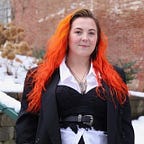A Handshake for “Dallas Buyers Club”
Jean-Marc Vallée’s 2013 film, Dallas Buyers Club is a work of riveting drama based on historical events. It tells the true story of rodeo cowboy Ron Woodroof (Matthew McConaughey) and his final decisions after he tests positive for HIV.
The film’s depiction of the AIDS outbreak in the 1980s highlights not only the injustices of the FDA’s regulation on medicinal remedies of the disease but also the growing panic of the masses. Dallas Buyers Club shows a clear intention to address the FDA’s strict regulations on unregulated drugs, regardless of their benefits to the sick. In doing so, the film also brings a fresh, often more gruesome look into the harrowing effects of HIV on its victims.
Ron Woodroof’s homophobic, reckless, smalltown-Texan-boy demeanor is spun on its head when he is forced into a metamorphosis of his own after his AIDS diagnosis. Woodroof must come to terms with the very people he used to alienate in order to become a pioneer in AIDS remedies for his own personal gain. Themes of governmental corruption and drug control are hard to miss, but what runs rampant in each scene is Woodroof’s own self-discovery that the audience discovers vicariously: the dead and dying are often the first to realize that they’re a lot less different from the rest of us than they’d like to think.
What makes Dallas Buyers Club so utterly distinct is that it merges two varying experiences: the hypermasculine world of the cowboy, and the discriminated perspective of a man with HIV. In this way, the film is able to target a wider scope of an audience, appealing to both LGBT activists and western lovers. Portrayed by Matthew McConaughey, Woodroof, a man who once refused to go to an AIDS Awareness meeting because of the way he was greeted too friendly at the front door, befriends Rayon, a pleasant, terminally ill trans woman played by Jared Leto.
A particularly powerful scene in Dallas Buyers Club clashes Woodroof’s two worlds together in a jarring way. Our main character’s friend, T.J., an old drinking buddy who outted Woodroof’s disease to their friends and participated in a hate crime against him, runs into Woodroof at the grocery store. Woodroof happens to be shopping with his friend Rayon, who’s off in the background. T.J. makes a cruel remark upon spotting Rayon, but he doesn’t know the two are friends until Rayon comes to join them, sticking her hand out to shake.
There’s disdain written all over T.J.’s face when he puts two and two together. He flips off the two of them and starts to storm away, but Woodroof is quick to put him in a gasping headlock.
“Shake his hand,” He orders. But T.J. is still fighting against his grip. Then again, “Shake his hand,” Woodroof threatens. T.J. does, in a desperate attempt to catch his breath. As the two are left alone again, Rayon’s mouth plays a smile towards Ron. They share a long stare. It’s a scene that bridges a gap between Ron’s old world and his new one. Ron’s reaction to the encounter proves he has evolved past the point of his old black-or-white homophobic ways. The blatant misgendering eases up as Woodroof’s understanding of the LGBTQ+ community progresses — though still at Rayon’s expense.
Because they both share the same sickness, Ron forms a bond with Rayon over their traumas. In doing so, their impending deaths become uniting. Dallas Buyers Club so successfully unifies such a vast audience through its depiction of the injustices and homophobia associated with the AIDS epidemic having a wider scope than simply those in the LGBT community. It humanized Ron Woodroof in ways that made it much easier to understand the film’s intent to bridge the gaps between the two communities and to show how cruel AIDS can be without the proper medication.
However, despite all of the praise that Dallas Buyers Club rightfully deserves for the grittiness of homophobia and terminal illness it underlines, there are some major slip-ups that can’t go unnoticed. For one, Jared Leto was awarded Best Actor in A Supporting Role (2014) for his performance as Rayon, despite being a cisgender male acting in a trans role. Leto’s character was misgendered, mistreated by her family, and called the F slur on multiple occasions.
While I’m not sure that I would have appreciated seeing a trans actress being berated onscreen as frequently as Rayon was in the script, I would have liked her to get the recognition she deserved for a role that Leto was hardly qualified for. After all, who better to play a woman vastly discriminated against than a woman who actually experiences such a thing?
Rayon serves her own purpose in the narrative beyond what she can do for Woodroof. While it’s unclear if the rocky relationships with her parents or her struggle with drug addiction are another way for the writers to pull the pity card on another trans character, at least her depth goes beyond being Woodroof’s sidekick. Rayon’s story is far too familiar for many queer people, especially those who came out in the eighties. She is mocked, ridiculed, and given improper medical treatment because of the stigma surrounding HIV.
Vallée’s film illustrates the desperation of a dying bigot in his search for relief from his grueling symptoms of HIV. In doing so, Dallas Buyers Club gives McConaughey’s character the room to grow out of his hard shell of homophobic hostility. The theme of the unity of death and universal struggle rings true in almost every scene. The message may not be pivotal to the queer community as properly representing queer struggles, Dallas Buyers Club has a different target audience. Maybe the people that need to watch this film are the ones that relate more to Woodroof than Rayon.
